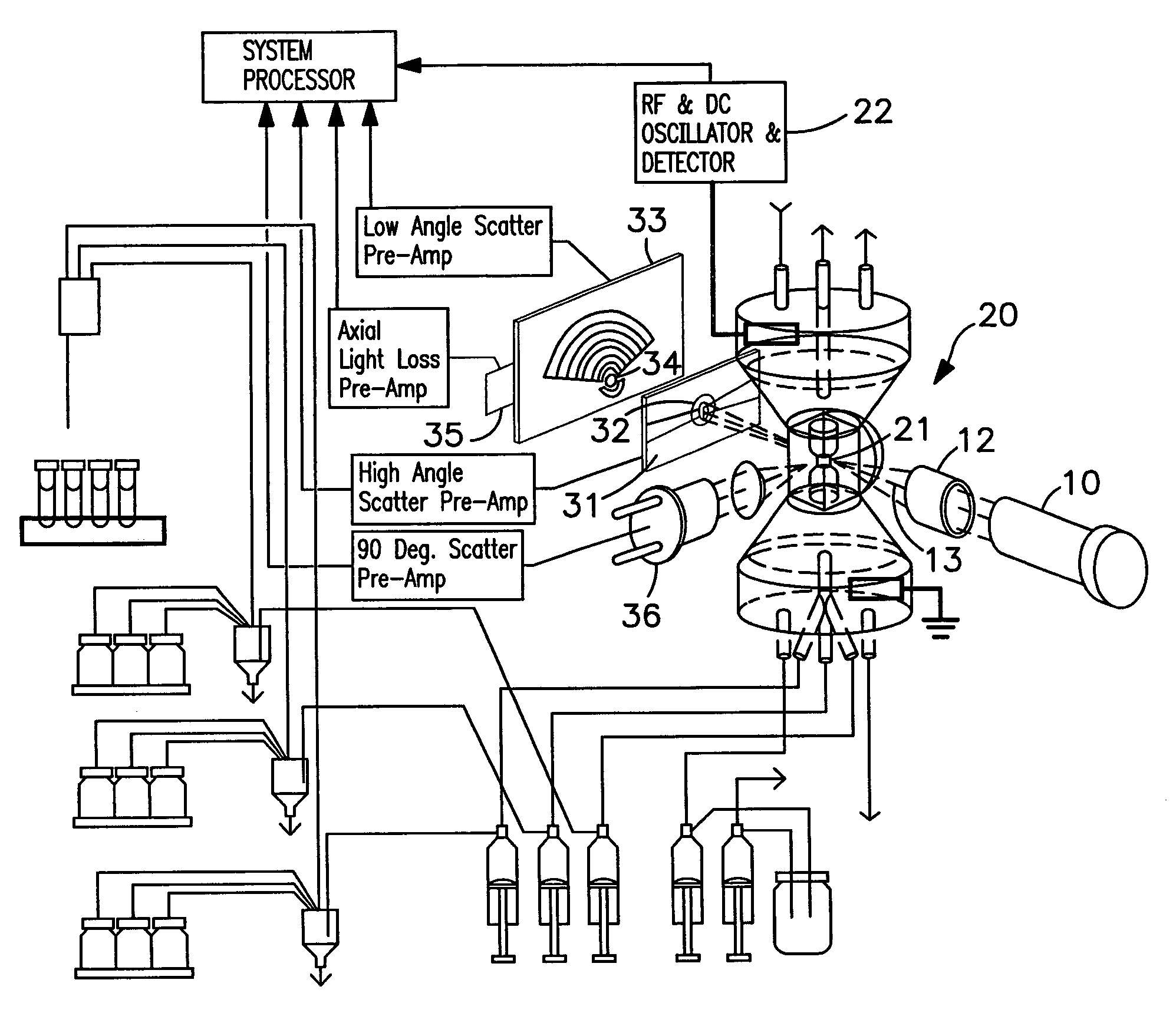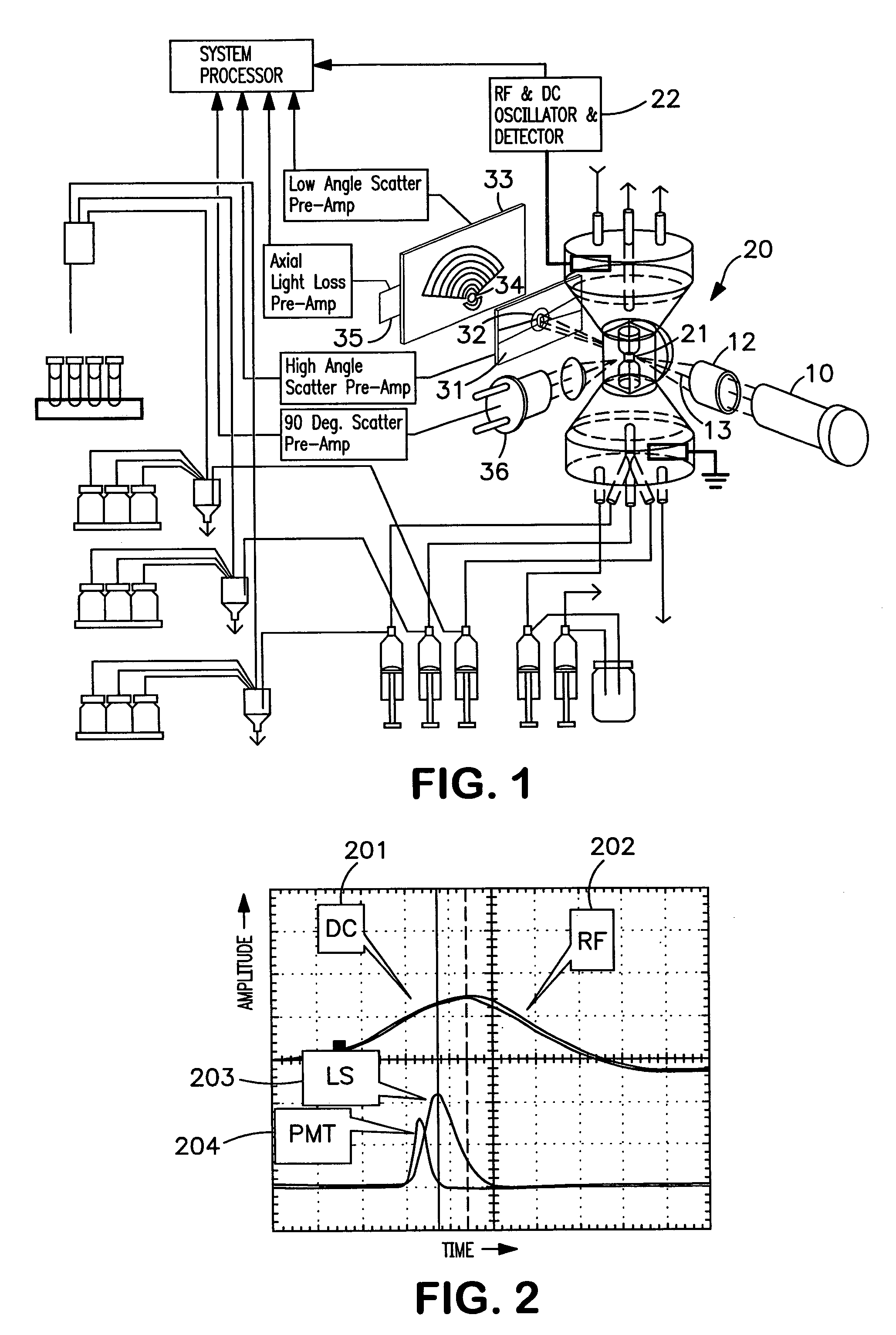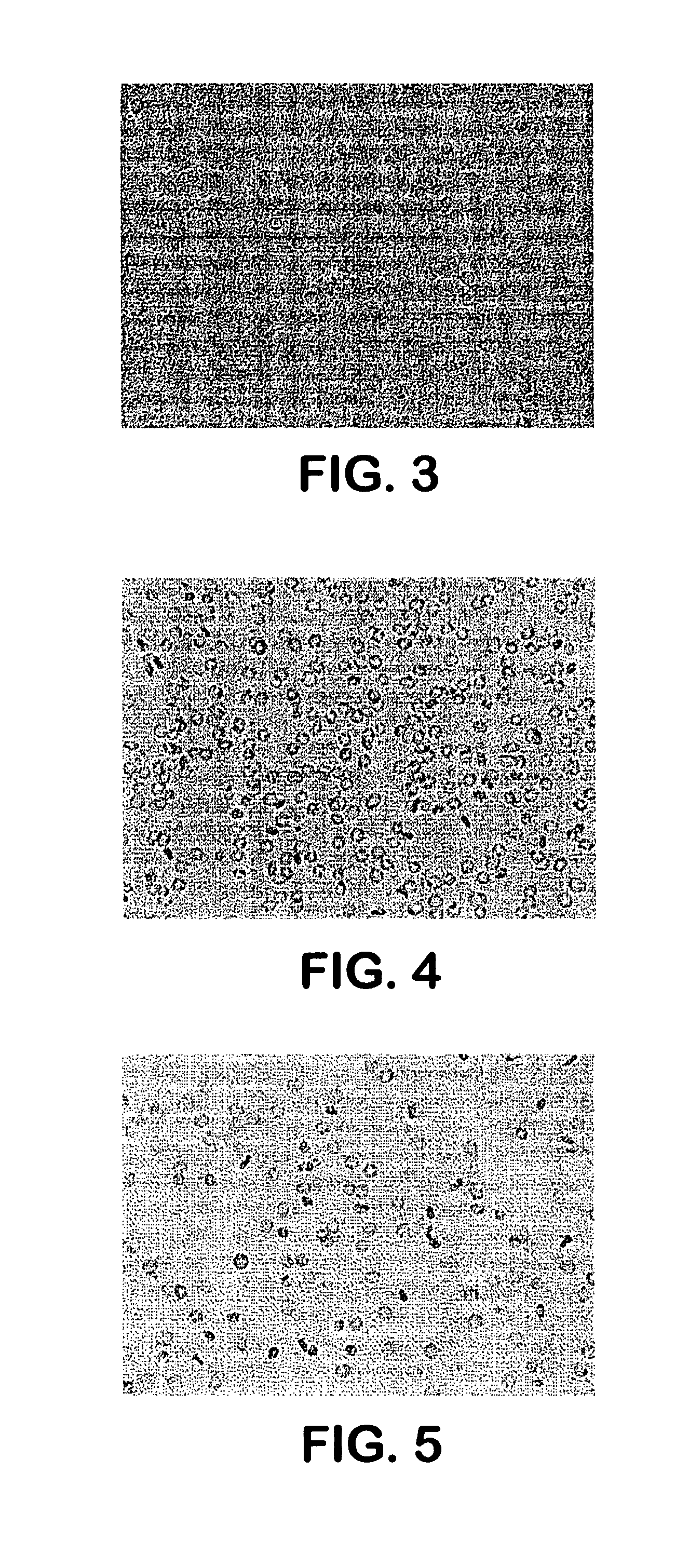Method and apparatus for performing platelet measurement
a platelet and measurement method technology, applied in chemical methods analysis, instruments, phase/state change investigation, etc., can solve the problems of false platelet counts, impedance-based measurement analyzers are not capable of discrimination, and cannot solve the problem of detecting false platelet counts
- Summary
- Abstract
- Description
- Claims
- Application Information
AI Technical Summary
Benefits of technology
Problems solved by technology
Method used
Image
Examples
Embodiment Construction
[0044]In the present description, it is to be understood that low angle light scatter signal is less than 10°, and preferably in a range from about 1° to about 7° off the beam axis of the incident light. Lower median angle light scatter is approximately from 6° to 26° and preferably from 9° to 20° and upper median angle light scatter is approximately from 15° to 50° preferably 21° to 43° off the beam axis of the incident light.
[0045]Axial light loss (ALL, also known as forward extinction) is generally the decrease in light energy due to a particle passing through a beam of incident light and being detected by a photo-detector. When the beam of incident light strikes a particle, the light is either scattered or absorbed, both of which remove energy from the incident light and the incident beam is attenuated. This attenuation is referred to as extinction. When viewed along the axis of the beam of incident light, it is referred to as axial light loss. Generally ALL signals are detected...
PUM
| Property | Measurement | Unit |
|---|---|---|
| platelet volume distribution | aaaaa | aaaaa |
| platelet volume distribution | aaaaa | aaaaa |
| angle | aaaaa | aaaaa |
Abstract
Description
Claims
Application Information
 Login to View More
Login to View More - R&D
- Intellectual Property
- Life Sciences
- Materials
- Tech Scout
- Unparalleled Data Quality
- Higher Quality Content
- 60% Fewer Hallucinations
Browse by: Latest US Patents, China's latest patents, Technical Efficacy Thesaurus, Application Domain, Technology Topic, Popular Technical Reports.
© 2025 PatSnap. All rights reserved.Legal|Privacy policy|Modern Slavery Act Transparency Statement|Sitemap|About US| Contact US: help@patsnap.com



